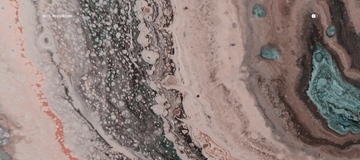Your skin is your largest organ by surface area and, as a barrier against the environment, it constantly encounters environmental microbes. There is an ecosystem of bacteria called the skin microbiome that inhabits the skin, keeps it healthy, and protects it against possible diseases caused by environmental bacteria such as Staphylococcus aureus (1, 7). Our skin also “learns” from the day we are born through exposure to the microbes in our environment. From the time we are babies, this exposure to the air and environment in our homes gives us the opportunity to adapt, aiding in the development of our immune and nervous systems (2). As we grow up, our skin microbiome constantly tries to adapt and strike a balance, regardless of changes that occur as we age, change our diet, experience different hormones, change our locations (and climates), etc.

Everyone has a different microbiome because we all have different types of skin, whether sebaceous (oily), moist, or dry (1). Different skin microbiomes can also form in response to different climates and environments in which we live. Different states and cities have different climates that are more suitable for some bacteria than others. The skin and its microbiome is constantly in direct contact with the outside environment, so it makes sense that it changes as the environment around you changes. This could be even more true for people living in different cities within any given state. For example, in California there are different microclimates across the state, even 20 minutes apart like Santa Monica vs. San Fernando Valley (“The Valley”) in Southern California (5). San Fernando is surrounded by mountains which blocks the marine air from continuously entering the city, giving it a warmer, drier climate. Santa Monica is on the ocean and constantly conditioned by cool, moist marine air. It is plausible that people from these two cities have different skin microbiomes because of different microclimates, but have similar ones to the people who live in their same local areas (5).
We may even be able to see a difference in our skin when we are in a different city or country for a while. For example, I lived in Michigan for about 22 years, and the summers there are quite humid. This increases the chances of breakouts and rashes or other blemishes because the humidity opens up the pores on my skin, which can then collect dirt and oil (3). When I moved to California last August, I began to notice that my skin was not breaking out as much as it was before. I would love to know how my skin microbiome also changed. When all of the analysis comes back from the Parallel Health skin microbiome study, we’ll be closer to understanding in aggregate what peoples’ skin microbiomes look like in California vs. Michigan. I hope to get some idea of how moving from Michigan to California changed my skin microbiome, which may have affected how many breakouts I get.
Not only does the skin microbiome change as the environment changes, but more specifically, it changes as you transition from urban to rural area or vice versa (2). People in urban areas are covered in synthetic chemicals, detergents, and cosmetics because of the types of industry, people, and plants/animals (or lack thereof) that live in cities (8). Studies have shown that people in urban communities have a reduction in diversity in their skin microbiomes, which may offer less protection from problematic bacteria (8).
Ultimately, if we can learn about the effect of our environment on our skin microbiomes, we can learn how to adjust our microbiomes to improve our skin health.
Have questions about what we discuss here? Talk to us: questions@parallelhealth.io
If you’d like to learn more and participate in cutting-edge skin microbiome research, join our community and we’ll notify you when there are products and opportunities that are right for you.
References:
- Byrd, A., Belkaid, Y. & Segre, J. The human skin microbiome. Nat Rev Microbiol 16, 143–155 (2018).
- Callewaert, Chris, Katia Ravard Helffer, and Philippe Lebaron. "Skin Microbiome and Its Interplay with the Environment." American Journal of Clinical Dermatology 21.S1 (2020): 4-11. Print.
- "Dermatologist's Advice: How Humidity Affects Skincare." Orlando Dermatology Center. 27 June 2019. Web. 30 July 2021.
- Du, Katherine. "Your Invisible Neighbors: Each City Has Unique Microbes." NPR. NPR, 19 Apr. 2016. Web. 30 July 2021.
- Furer, Ferdinand. "Microclimates: What Are They and Why Do We Have Them?" What Is a Microclimate and Why Do We Have So Many in SoCal? 1 Jan. 2021. Web. 30 July 2021.
- Green, Lyndsay. "Warning: These Winter Habits Are Drying out Your Skin." Glamour. Glamour, 22 Jan. 2016. Web. 30 July 2021.
- Loomis, K.H., Wu, S.K., Ernlund, A. et al. A mixed community of skin microbiome representatives influences cutaneous processes more than individual members. Microbiome 9, 22 (2021).
- McCall, Laura-Isobel, Chris Callewaert, Qiyun Zhu, Se Jin Song, Amina Bouslimani, Jeremiah J. Minich, Madeleine Ernst, Jean F. Ruiz-Calderon, Humberto Cavallin, Henrique S. Pereira, Atila Novoselac, Jean Hernandez, Rafael Rios, OraLee H. Branch, Martin J. Blaser, Luciana C. Paulino, Pieter C. Dorrestein, Rob Knight, and Maria G. Dominguez-Bello. "Home Chemical and Microbial Transitions across Urbanization." Nature Microbiology 5.1 (2019): 108-15. Print.




























